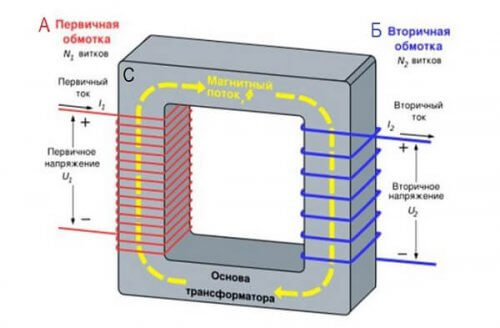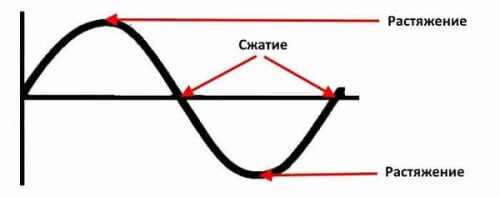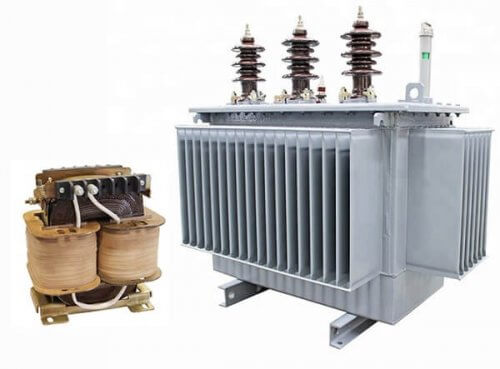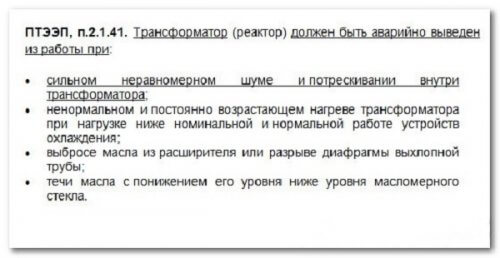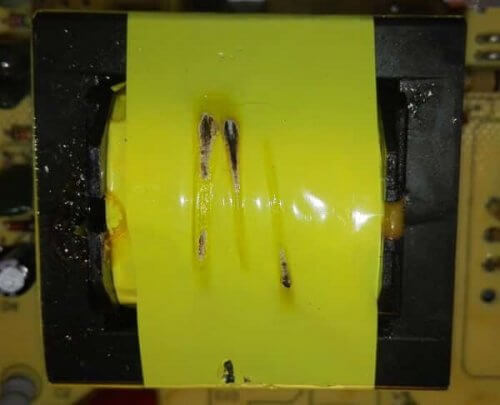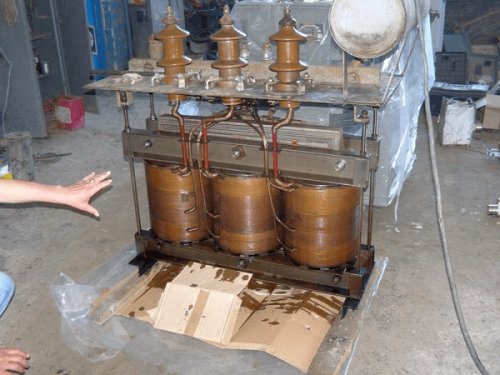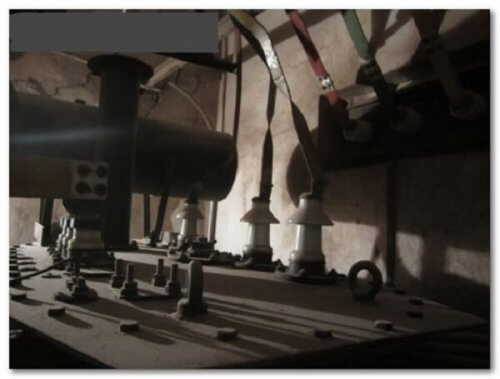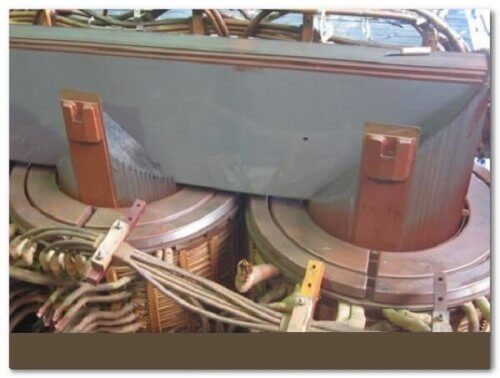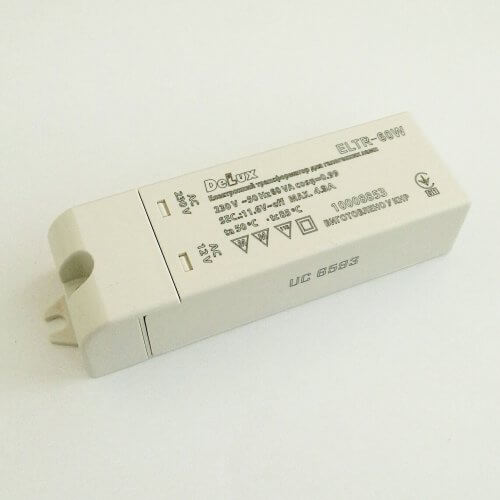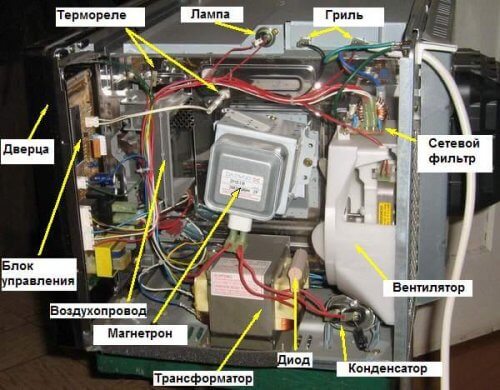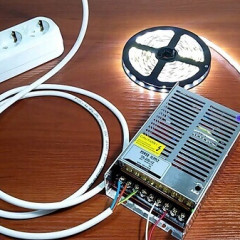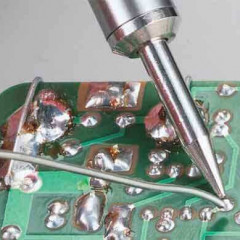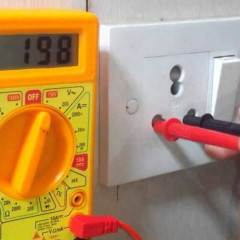Why the transformer is buzzing: the main causes and solutions
A working transformer often becomes a source of hum caused by physical processes occurring in the device under normal operating conditions. But, if the noise level is too high or the transformer is buzzing in the microwave, tube amplifier and in other household appliances, this may indicate a malfunction of the devices. Why are loaded transformers humming? Let's figure it out.
Principle of operation
In school years, physics classes gave us the concept of magnetostriction. Not everyone, however, then it was interesting. Let us try now to return to the topic and briefly outline the essence of the process. First, let's recall how a transformer works.
The figure shows the simplest device consisting of a primary winding (A), a secondary winding (B) and a core (C) - a magnetic core assembled from metal plates or from a material having ferromagnetic properties.
When an alternating voltage is applied to the primary winding (A), a current begins to flow in it, under the influence of which a magnetic flux (Ф) is formed in the core (C), which induces a current in the secondary coil (B), to which the load is connected. A voltage conversion takes place, the value of which at the output will depend on the ratio of the number of turns of the primary and secondary windings. The frequency will remain unchanged.
Magnetostriction is a physical process of changing the volume and size of a body under the influence of a magnetic flux passing through this body. Subject to change are materials with pronounced magnetic properties, from which cores for transformers are produced.
The figure shows the frequency of the process of compression and extension of the core per cycle of magnetic flux change. Changes in the size of the magnetic circuit lead to air vibrations. Waves are formed having a frequency in the sound range (50 Hz). This is the very buzz that accompanies the normal operation of power transformers. In IIP (switching power supplies), such noise is absent, since the frequency of waves generated in the process of oscillations is not included in the range audible by a person.
Factors Affecting the Level of Hum
How much the transformer is noisy depends on:
- degree of workload;
- overall dimensions;
- physical characteristics of the material of which the magnetic circuit is made.
An overloaded transformer will buzz louder than operating at rated load. And the characteristic noise arising from the operation of large power converters in substations is normal.
Causes of side sounds in the transformer:
- When the winding of the coil is loose, under the influence of magnetic flux, which tends to shift the windings of the device relative to the core, vibration occurs, accompanied by a hum.
- In the process, with poor fitting of the core plates and the formation of gaps between them, vibration occurs, accompanied by a metallic ringing, subsequently noise.
- In case of violation of the integrity of the wires of the winding coil can spark. The process is accompanied by claps. With powerful discharges, the sound is more intense.
- A loose transformer and its parts also vibrate and hum.
Power Transformer Noise Causes
A normally working power transformer is buzzing without sudden sudden sounds, rattling, buzzing. If irregular noises and crackles are heard, the device must be urgently taken out of service.
To determine the cause of the hum, a diagnosis is made. To do this, first conduct a visual inspection of the transformer. If traces of sagging, burned insulation, blackened areas are visible, then they conclude that an interturn circuit has occurred.
If a step-down transformer is diagnosed, you can plug it into the network to check the voltage on the secondary winding. When cracking, smoke, the system is immediately de-energized.
If, when turned on, the transformer buzzes and heats up, this indicates an increased current load. The causes of the phenomenon are malfunctions in the consumer circuit.
If the device buzzes after rewinding and assembling, this means that:
- The core is incorrectly assembled or fitted.
- The coil is not fixed or the windings are not wound tightly enough. In this case, you need to fix the coil, rewind the winding or fill the device with paraffin.
- Incorrectly calculated windings (especially primary). In this case, the transformer will be humming and warming under load. Correction of calculations and correct rewinding will be required.
The reasons for the increased noise may be the loosening of the bolts of the fastening of the components: core, housing, cover, exhaust pipe, expansion tank and others.
How to fix the problem? It is necessary to turn off the transformer and pull out the fasteners.
When the sheets of the magnetic circuit are vibrated, the extreme sheets are wedged. For this purpose, an electric cardboard is suitable.
If the transformer is humming due to:
- overload, you need to reduce the load by disabling some of the least significant consumption objects;
- unbalanced load required evenly redistribute the load in phases;
- electrical discharges between the winding and the housing, it is necessary to bring the transformer in for repair with disassembly and removal of the active part to find, and eliminate the place of occurrence of the discharge.
Noise in household appliances
The effect of magnetostriction on network transformers operating in household appliances is negligible, so the causes of humming in most cases indicate an abnormal situation.
Why is the transformer in the AC mains humming? What is the reason for annoying sounds and what to do to get rid of them?
In lamps and chandeliers, the phenomenon occurs due to the high power of 12 halogen halogen bulbs. To get rid of the undesirable effect, you need to reduce the power of light sources or install an electronic transformer of greater power (it does not always help, sometimes you just need to buy a high-quality and expensive power source).
If a whistle is heard in a completely new TV with a properly tuned receiver, most likely its source is poorly assembled transformers or chokes. It is necessary to additionally solder the parts and, to eliminate vibration, fill the windings with glue or zaponlak.
The transformer included in the power supply unit for the LED strip has one big drawback. It beeps under heavy load, and even more often the squeak is heard when dimming. The problem goes away after installing a sealed power supply, through the case of which, in simple words, the sound simply does not break through. You can also try to find on sale Dimmer with high frequency PWM.
If the subwoofer is buzzing, the problem may be in the malfunction of the smoothing capacitors of the power supply and in the sound amplifier that has failed. Then in the columns there is a constant hum, to get rid of which will help replace parts that have become unusable. If the elements of the amplifier are operational, then you should increase the capacity of the filtering capacitors after diode bridge in the power supply unit, excessive increase can lead to failure of the diode bridge at startup.
If the microwave is humming and vibrating when turned on, it is most likely that the power transformer has broken. Before touching the internal elements, you must turn off the power and forcibly discharge the high-voltage capacitor through the bulb. Damage can be in both the primary and secondary windings. In this case, it is better to contact the service center.
If the microwave is cracking, there may be a problem in high voltage breakdowns. Usually this is "treated" by removing contaminants and tinting those parts of the body (inside the microwave) from which the paint has fallen off, or by replacing the mica.
A squeak in a 12-volt charger is also observed when parts are poorly secured or if the charging current is set too high. It’s also possible it’s time to change the battery, as the plates of its cans are shorted together. Over time, if this is a factory defect, the vibration of these elements can loosen the solder, forming in this place increased contact resistance, which under the influence of current will heat the entire area. This may cause a short circuit and a fire in the charge. In this regard, if a problem occurs, it is better to immediately change the device to a new one.
So to summarize. If the power transformer at the electrical substation is humming evenly, without sudden sudden sounds, this is a normal natural process. If we hear how the device, which had not made such sounds before, is buzzing, we need to start repairing it.
In the absence of the necessary knowledge and experience, do not interfere with the device. It may be dangerous. Trust the professionals.
Related materials:

